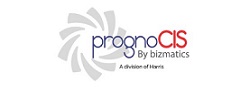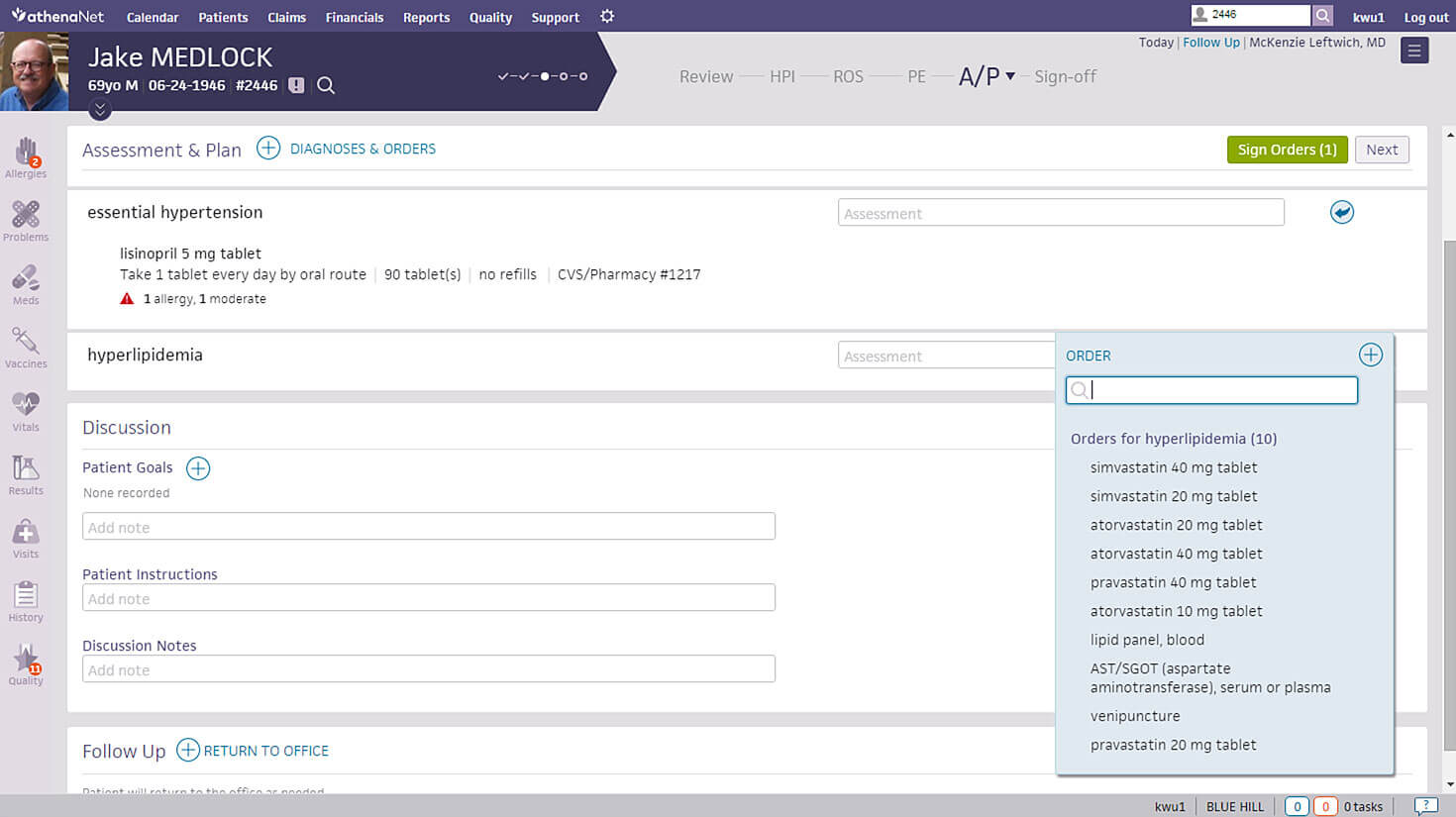What is a Urology EMR Software?
Urology EHR Software is designed to meet the unique requirements of the discipline while streamlining workflow for the financial and clinical benefit of the practice. Urology requires discreet data storage and management as well as greater connectivity with labs, pharmacies, and diagnostic equipment for transparent information sharing. Urologists can complement the Electronic Health Records (EHR) software system with robust Practice Management software (PM) that will improve office workflow through scheduling, billing, and efficient patient correspondence. A top-ranked Urology Software system will offer interoperability options to allow for seamless communication between urology clinics and hospitals for supreme care coordination. A top-ranked urology electronic health records software will integrate with Picture Achieving and Communication System (PACS) streamlining the reporting workflow and offering a complete clinical view to the urologist.
Features of Urology EHR Software System
To have a good understanding of how the software system works, it is advisable to learn about the different features and functionalities of the software. Before choosing a Urology Electronic Health Records (EHR) software, we should check if the software has the following key features:
Specific Templates – Urology-specific templates declutter an EMR software system making it easier for urologists to take SPAO notes quickly and without error. These templates cover a vast range of urology-specific ailments such as:
- Vasectomy
- UTI
- Infertility
- Incontinence
- Hematuria
- Prostate cancer
- Renal stones
Coding and Billing – Urologists use specific terminology that electronic medical records software should incorporate into their system as it assists in retrieving procedural codes (ICD/CPT). These codes are essential for billing purposes as they indicate which procedures have been performed and which treatments are prescribed, making the claim process faster and more accurate.
Lab Interface – A strong lab interface through the urology software system will allow urologists to send customized order sets of tests that need to be conducted on each patient. This also allows quick import of patient results that can be stored and managed automatically in their files.
Medical Equipment Integration – Automatically receive results of electronic urinalyses, kidney MRIs, or other medical tests. Before buying your solution, make sure the Urology EHR Software system will be compatible with all urology reports and devices.
Medication Management – A big part of patient care in urology is prescription medicine. Medicine management enables urologists to track prescription history as well as alerts of allergic reactions. These alerts are customizable to the needs of the physician and enhance patient safety.
Workflow Management – If you work in a Urology practice, you need to deal with recording and storing large volumes of data. The Electronic Medical Records (EMR) Software should be able to manage, document, and maintain all urology-related workflows efficiently. This helps the physicians have a better understanding of the condition of the patient and helps them in taking the right decisions at the right times.
Referral Tracking – In the case of referrals to other specialists Electronic Medical Records software needs a referral tracking system as well as secure messaging for discreet sharing of patient medical files.
Urology Dashboard – The Top Urology EMR software system must feature a real-time dashboard that will help physicians clearly view patient charts, profiles, billing processes, scheduling, etc. all in one place. The dashboard also saves the time that is taken in opening multiple tabs improving efficiency.
Latest Updates on Urology EMR Software
As of early 2025, Electronic Medical Record (EMR) software continues to evolve, offering specialized solutions across various medical fields. In urology, platforms like UroChart EHR Software provide tailored templates for conditions such as UTIs and prostate cancer, enhancing diagnostic accuracy.
What You Need To Know About EMR Software
Overview
Electronic Medical Records Software or commonly referred to as EHR Software represents the electronic method of storing medical records for patients. Using specially designed software, physicians and other medical professionals can store anything ranging from patient demographics to extensive clinical information about patients, such as medical history, social history, lab reports, and more.
EMR Software by Specialty
Since all medical providers (MDs, DOs, PAs, NPs, LCSW, OT, etc.) work distinctly based on their background and medical specialty, EMR Software or EHR Software must accommodate the unique style and documentation requirements. Examples of such specialty-specific features include the ability to annotate images or the capability to store before/after photos for Pain Management specialists and Dermatology specialists respectively. Similarly, other specialties such as Pediatrics, Oncology, Podiatry, Ophthalmology, Neurology, Nephrology, Dialysis Centers, Rheumatology, and Chiropractic Care require their unique set of specialty-specific features to simplify adoption.
Meaningful-Use
Since the introduction of the HITECH Act, healthcare IT has undergone a massive transition starting from the widely recognized Meaningful Use program to what is now known as MACRA, the Medicare EHR Incentive Program. The Meaningful Use program has transformed and now formed part of the four components of the new Merit-Based Incentive Payment System (MIPS), which itself is a fundamental part of MACRA.
For some medical practices, the transition from paper-based records to EMR Software (Electronic Medical Records Software) has not been a simple one. Regardless, realizing that the benefits of utilizing ONC Certified EMR Software far outweigh the hassle and challenges associated with it – ensuring a viable future, most practices today have successfully transformed their clinical and administrative operations to EMR Software.
EMR Software Benefits
Aside from ensuring tangible financial incentives and profitability, practices converting to EMR / EHR Software have seen the following benefits:
EHR Software Requirements by Practice Size
Just like a medical specialty, EHR Software requirements also depend on the size of the medical practice. From solo-provider clinics to large multi-provider, multi-specialty clinics, every practice has unique inherent challenges that must be addressed by the EMR Software vendor.
Small or Solo Provider Practices
A small doctor’s office not only has a limited number of staff members but their EMR Software budgets are also extremely low compared to a large enterprise such as a hospital. Due to these budgetary constraints, many providers simply choose to employ Free EMR Software or choose an affordable EHR Software vendor with a low fixed monthly fee. Cloud-based access is one such important requirement so that these providers can access patient charts even from home when needed.
Medium-Sized Practices
These practices usually consist of 5 to 10 medical providers often belonging to the same medical specialty. Their requirements are more stringent, and their budget is also considerably large. Aside from specialty-focused requirements (EMR Software by Specialty), these practices also require unique features such as interoperability, dedicated customer support, multi-device support as well as extensive reporting functionality to keep an eye on the overall performance of the practice.
Large practices
Larger group practices generally comprise more than fifteen or often twenty medical providers. These practices usually provide medical services that fall under various medical specialties (Orthopedics, Pain Management, Surgery, Chiropractic Medicine, Family Medicine, etc.). Therefore, these practices require support for multiple users to access the system simultaneously, as well as for the Scheduling software to accommodate multiple locations, providers and resources such as Dialysis Chairs, procedure room allocation etc. These practices also keep replacing or adding staff members and need a scalable solution.
Hospitals or enterprise organizations
EHR software companies such as Epic, Cerner, AllScripts, NextGen, Athenahealth, IMS by Meditab, eClinicalWorks, Meditech, McKesson, MEDHOST etc. usually target and provide solutions for larger corporations like Hospitals, ACOs, PCMH, IPAs, CINs (Clinically Integrated Networks), Public Health Departments etc.
These customers have the most elaborate list of requirements, which are usually documented in the form of an RFI or RFP to assess and shortlist vendors that can meet them. The requirements consist of features like inventory management modules, interface with local labs (LIS), machines and diagnostic equipment along with drug dispensing (pharmacy management software) and electronic medication administration records (EMAR) etc.
These entities also require the EHR software also need to integrate with multiple other software and medical devices.
Why does your practice need EMR Software?
Since the introduction of Meaningful Use, most healthcare practices simply have little or no choice but to convert their practice operations to an EHR software. However, most providers today select the EHR software of their choice that best suits their specific needs and must perform an extensive search to evaluate all available options before they find one that is suitable. Most potential EMR Software buyers in the market today have the following in common:
- Do not know what they are looking for
- Know exactly what they want but don’t know where to start or find it
- Relying on advice from colleagues using EMR software already
Although #3 is ideal, every provider and practice workflows are unique and therefore what works for one provider may not suit the other. “One size fits all” simply doesn’t apply in the world of healthcare IT. Software experts and industry specialists are an ideal source of information, advice and ultimately ensuring that the right decision is made.
What to Look For in a Potential EMR Software?
EMR software includes several types of software based on specific applications or functionalities:
Cloud-based EMR software
Small doctor offices benefit the most from Cloud-based EMR Software technology since minimum to no upfront cost or maintenance is required and accessing the EHR Software is possible from any location given the availability of internet access. This type of EMR software is also device independent in most cases and can be accessed using devices such as Smartphones (Android & iOS), iPhones, iPads, laptops, and desktop computers.
Mac EMR Software
Apple dominates the digital device and computers market in the US today, so it is no surprise that many providers are specifically looking for their EMR Software vendor to support Mac operating system (Mac EMR Software). Not all Vendors today work on a Mac device, so looking for a vendor with native support for Mac devices is essential to ensure that the software performs on existing hardware at the practice and does not require more investment in computer systems.
ONC-ATCB Certified EMR Software Vendors
This is the most significant requirement for most software buyers today as the software must comply with the standards and guidelines set by the Office of the National Coordinator (ONC). Online repository details all software vendors and details related to their respective compliance with the measures set by the ONC (Click here). Software that complies with these standards have undergone rigorous testing and confirmed at a benchmark level defined by the federal body. The software testing done during this exercise checks all areas of the EMR Software system from Patient Portal access to the way the EHR Software communicates with other programs and entities like labs, Pharmacies (via e-Rx), hospitals, HIEs etc.
Urology EHR software
Electronic health records software (EHR) for urology, nephrology, surgery or ob-gyn care specialty providing practices must provide unique tools to document the clinical workflow of those specialists such as diagnosis or specifying the area of concern (for example UTI) rather than being a mere method of capturing text or raw data.
Integrated Practice Management Software
With competition rising in healthcare IT, EMR software providing integrated Practice Management software as part of their overall software package easily outperform rivals with standalone EHR Software including those that may provide a specialty-specific EHR software. EMR Software companies with integrated Practice Management solutions often tend to provide extensive reporting capabilities to track practice performance and manage the business operations better.
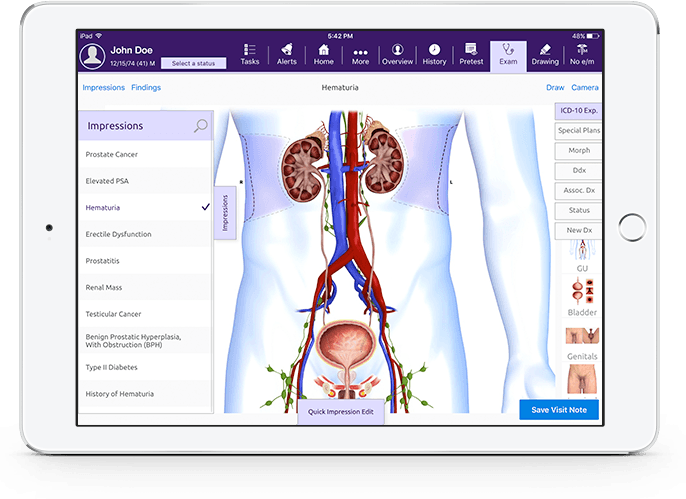
EMA Urology EHR Software
Integrated Medical Billing Software
Medical practice has several needs of software systems to streamline operations across the board. One such important area is billing for services rendered and communications with insurance companies. Medical Billing Software, therefore, works best when integrated with the Electronic Health Records software. All clinical documentation seamlessly conforms to the required standard and forms a financial document that can be electronically sent to payers (insurance carriers) to verify and process at their end. This simplifies the operations and ensures all parties are on the same page when it comes to the financial health of the enterprise. Medical billing software helps practices and medical billing managers generate claims, patient statements, verify patient eligibility and more. This software is ideal for practices who want to handle billing in-house and can integrate with EMRs.
Security
An EMR Software must ensure the security and safety of patient records while ensuring privacy and HIPAA compliance for patient/doctor communication (Patient Portal). This is a paramount concern for physicians and HIPAA compliance should be guaranteed at all times by the EHR Vendor. Most Vendors today (Epic, Cerner, Athenahealth, AdvancedMD, PrognoCIS, Modernizing Medicine, eClincalWorks etc.) are aware of the importance of HIPAA compliance and have taken steps to ensure the safety of patient records security in every section of the EHR Software using advanced tools like data encryption technologies to enhance the security of the EMR software.
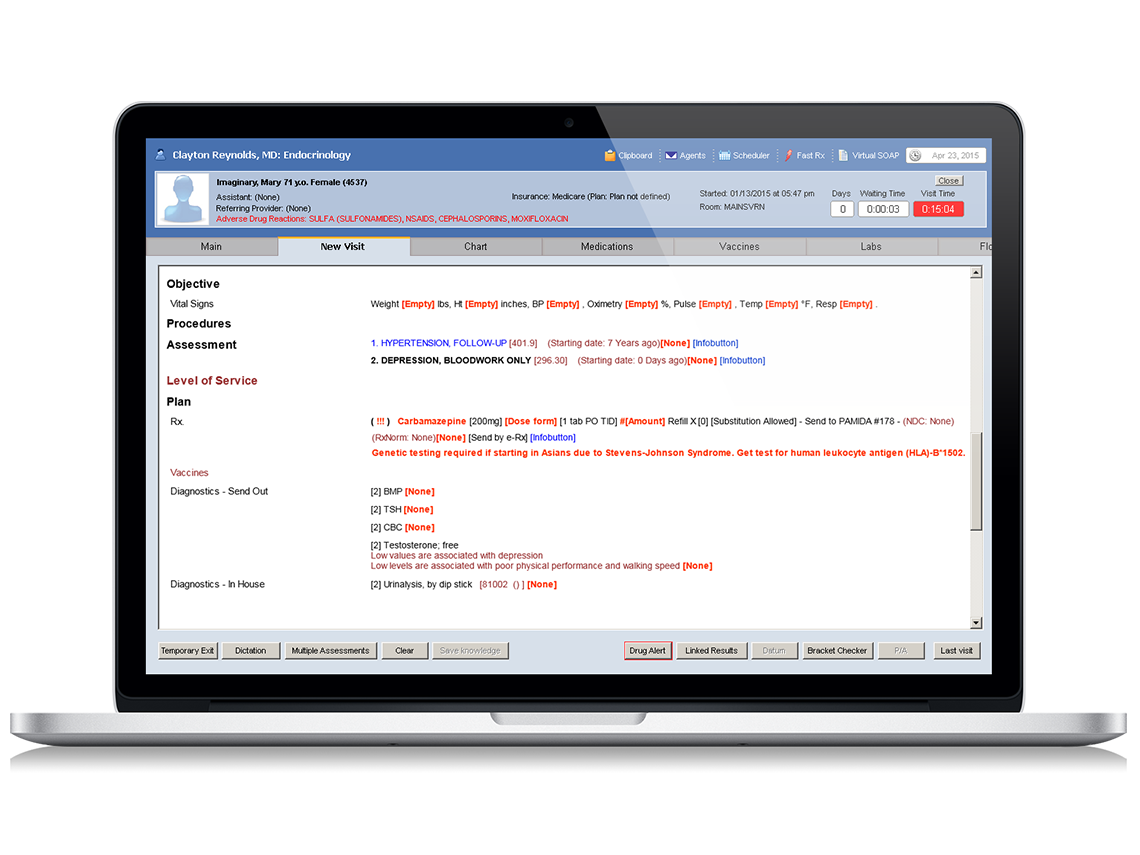
Praxis EMR Software
Specific Services
One of the decisions your practice will have to make is whether you want just an EMR software or one with an integrated Practice Management for billing and scheduling. There are advantages to having both together but there have been cases where some practices only go for one if they had unique requirements that a vendor could not fulfill, or they had already paid a hefty amount for a PM software and weren’t looking to replace it yet.
Ease of Use and Training
Doctors are not IT professionals, and though some might be tech savvy, it would be egregious to expect them all to be experts on the EHR software. Ease of use is essential to make the transition from paper to electronic smooth, as well as day to day practice to go along without a hitch. If the software is too complicated and hard to understand, it’s a waste of precious time and needlessly aggravating. Some vendors offer free training while others don’t; make sure you ask for training if your practice needs it.
Specialty Specific
Not all specialties are created equal, so why must their software be generic? Basic EHR software works well and is good for general practice and most specialties, but doctors have complained about specialty specific not being available in the market. Specialty-specific EHR software has inbuilt recording systems that make specialty practices function efficiently. Only a few vendors provide specialty-specific software, so there aren’t many to choose from. But more vendors are cottoning on to the demand and there should be more options in the near future.
Support
Support is a major issue most practices have with their current vendors. A good support team can make small glitches to major roadblocks easy to maneuver while a bad one will just make things worse. Some vendors provide support as part of the plan you’re already paying for, while others charge extra for support. Scout the market, read reviews, or just ask point blank if there will be a special support team assigned to each practitioner and whether you’ll be charged for the service.
Hidden Cost
There are varying price lists out there, some offer free services, while others charge an arm and a leg for specialty services. Either way there will be hidden costs that you might get to know about later. Fix your budget and talk to vendors you interview about hidden costs within the contract and whether services such as training and support are free.
Mobility
Smartphones have changed the dynamics of mobile usage. Handheld devices are easy to carry around and can be used for any number of uses. Most people are ditching the cumbersome PC for a handheld device. Doctors mostly use iPads or Tablets in the examination room to take down patient symptoms, check history and note down the prescription, so it’s imperative that the vendor has a mobile application that is synced with all the mobile devices being used in the practice.
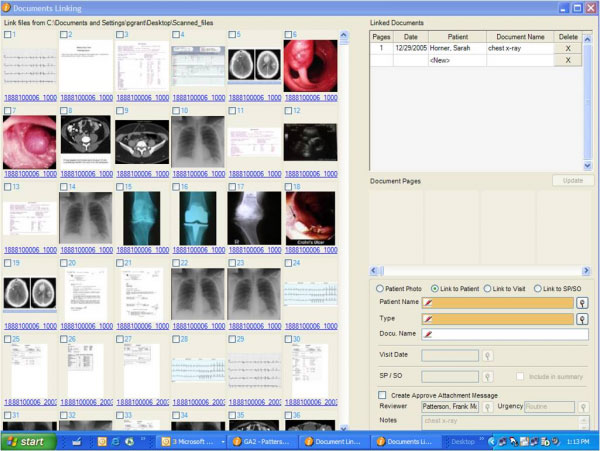
Aprima EMR Software
Market Trends to Be Aware Of
Like anything else, the EMR software industry is also subject to constant changes. From new technology to legalities and governing bodies, everything is constantly changing. Here are some of the changes I think it would do well for you to keep track of.
Cloud-Based Services
Recent research found that only 25% of practitioners are interested in a web-based model and only 50% are willing to have it as an initial model that eventually transitions to cloud-based. Cloud-based EMR software cuts down on steep upfront costs for client servers and can be hosted on any device that has a web browser. It’s no surprise that more and more vendors are transitioning to cloud-based software because the industry demands are changing.
Meaningful Use Changes
At a recent healthcare conference Andy Slavitt, the Centers for Medicare & Medicaid Services administrator, declared that Meaningful Use was over, and would be replaced by the end of this year with something better. However, a deeper look into the claims revealed that meaningful use would still be there, only much improved.
The new measures aim to make the reporting and benchmark for reaching the required reports much easier and laxer than under Meaningful Use, along with other changes. Yet it is safe to say that none of these changes will make an impact till the end of 2017.






